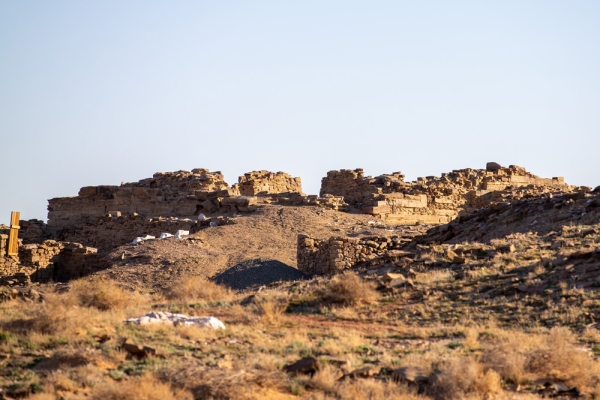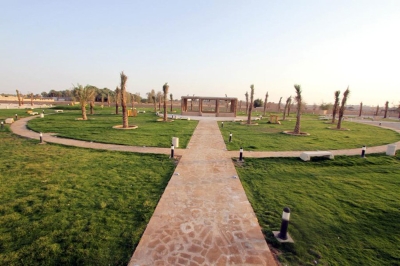
Al-Ablaq Palace,also known as "al-Ablaq Fortress," is a historical palace located southwest of Tayma' Governorate in Tabuk Province of the Kingdom of Saudi Arabia. Its construction is attributed to Adiya, the ancestor of the pre-Islamic poet al-Samaw'al.
Names of al-Ablaq Palace
Al-Ablaq Palace has been known by several names, including "al-Radhm" Palace and "al-Fard" (the unique) due to the absence of any similar structure in its time. Renowned for its strength and fortification, it is also referred to as "al-Samaw'al Palace" and "al-Ablaq al-Fard."
Al-Ablaq Palace in historical books
The palace derived its name from its color, which ranges between white and red—a hue referred to as "al-Ablaq" in Arabic. Built of stone on an earthen hill, it gained historical fame and was mentioned in many ancient Arabic books. In "Kitab al-Aghani" by Abu Faraj al-Asfahani, it is noted that Adiya, the ancestor of al-Samaw'al, dug a well of fresh water in the fortress. Arabs would visit, and he would host them, establishing a market near al-Ablaq.
The palace is also mentioned in "Mu'jam al-Buldan" by Yaqut al-Hamawi in the thirteenth century, who indicated that the palace was "in ruins." Contrary to this, Sheikh Hamad al-Jasser, died in 2000, in his book "al-Mu'jam al-Jughrafi Lil-Bilad al-'Arabiyyah al-Su'udiyyah" (Geographical Dictionary of Saudi Arabian Countries) pointed out its "strength," explaining that the remains of the fortress still exist.
A proverb is attributed to "al-Zabba'," the Queen of Palmyra who lived in the third century and died in 273: "A giant rebelled, and al-Ablaq still strong," which may imply that she could not capture al-Ablaq Palace.
Al-Ablaq Palace in Arabic poetry
Al-Ablaq Palace is mentioned several times in ancient poetry, including:
- Adiya built for me a fortress grand and strong, With water to draw, whenever I long
- In al-Ablaq al-Fard my home does stand ... No destiny’s house rivals al-Ablaq
Al-A'sha said about it:
Not even Adiya could prevent death with his wealth, And the unique al-Ablaq of the Jew in Tayma'
Its heights were established by the son of David for a time, With lofty arches and strong construction
It rivals the midpoints of the sky, and beneath it, Are courtyards, halls, plaster, and a moat
It has a high tower at its top and elevations, And musk, basil, and wine that claps
And fair maidens like dolls and generous women, Pots, a cook, a Sa` (unit of measurement), and a bowl
Thus, its lord could not escape death, but death came to him unhesitatingly.
Al-A'sha also said:
In al-Ablaq al-Fard of Tayma is a dwelling, a fortified castle, and a neighbor who does not betray
Archaeological excavations at al-Ablaq Palace
The General Directorate of Antiquities at the Ministry of Knowledge (currently Ministry of Education) conducted archaeological excavations at al-Ablaq Palace. It was found that settlement at the site dates back to the early first millennium and continued until the early centuries.
Related quizzes
Related articles

